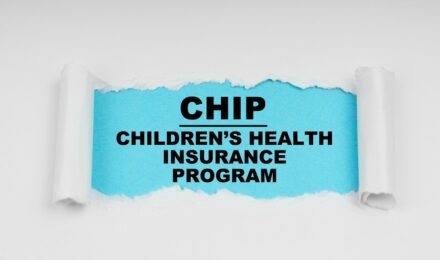Contents
- 1 What Is the Open Enrollment Period?
- 1.1 Key Dates and Deadlines
- 1.2 Types of Open Enrollment Periods
- 1.3 What You Can Do During Open Enrollment
- 1.4 Preparing for Open Enrollment
- 1.5 Understanding Your Options
- 1.6 Financial Assistance Options
- 1.7 Common Mistakes to Avoid
- 1.8 Special Enrollment Periods
- 1.9 Resources and Support
- 1.10 Conclusion
- 1.11 Citations
The Open Enrollment Period (OEP) represents a critical time window when individuals and families can enroll in, change, or renew their health insurance coverage. According to the Centers for Medicare & Medicaid Services (CMS)[^1], this annual period ensures Americans have access to comprehensive health coverage while maintaining stability in the insurance market.
What Is the Open Enrollment Period?
Open Enrollment is the annual timeframe when anyone eligible for health insurance can:
- Enroll in a new health insurance plan
- Switch from their current plan to a different one
- Renew their existing coverage with modifications
- Apply for income-based subsidies
According to HealthCare.gov[^2], the federal Open Enrollment Period for 2025 coverage runs from November 1, 2024, through January 15, 2025, though some state-based marketplaces may have different deadlines.
Key Dates and Deadlines
For most states using the federal marketplace:
- November 1, 2024: Open Enrollment begins
- December 15, 2024: Last day to enroll for coverage starting January 1
- January 15, 2025: Final deadline for 2025 coverage
Note: According to the Department of Health and Human Services (HHS)[^3], some state-based marketplaces may extend these deadlines or offer different enrollment windows.
Types of Open Enrollment Periods
Marketplace Open Enrollment
- For individual and family plans through the Health Insurance Marketplace
- Includes plans both on and off the exchange
- Opportunity to qualify for premium tax credits and cost-sharing reductions
Employer-Sponsored Health Insurance
- Timing varies by employer
- Typically occurs in fall (October/November)
- Usually lasts 2-4 weeks
Medicare Open Enrollment
According to Medicare.gov[^4], the Medicare Annual Enrollment Period runs from:
- October 15 to December 7 annually
- Allows changes to Medicare Advantage and Part D plans
What You Can Do During Open Enrollment
- Enroll in New Coverage
- Choose from various plan types (HMO, PPO, EPO)
- Select coverage levels (Bronze, Silver, Gold, Platinum)
- Add family members to your plan
- Modify Existing Coverage
- Change plan types or coverage levels
- Adjust deductibles and premiums
- Update covered dependents
- Apply for Financial Assistance
- Premium tax credits
- Cost-sharing reductions
- Income-based subsidies
Preparing for Open Enrollment
Essential Documents
- Social Security numbers for all applicants
- Income documentation
- Current health insurance information
- Employer coverage details (if applicable)
- Immigration documentation (if applicable)
Important Considerations
- Budget Assessment
- Monthly premium costs
- Expected medical expenses
- Prescription drug needs
- Financial assistance eligibility
- Network Evaluation
- Preferred healthcare providers
- Local hospitals and facilities
- Prescription drug coverage
- Specialist availability
- Coverage Needs Analysis
- Anticipated medical services
- Chronic condition management
- Family planning needs
- Mental health services
Understanding Your Options
Plan Types
- Health Maintenance Organization (HMO)
- Primary care physician required
- Referrals needed for specialists
- Limited to network providers
- Preferred Provider Organization (PPO)
- More provider flexibility
- Higher premiums typically
- Out-of-network coverage available
- Exclusive Provider Organization (EPO)
- Network-only coverage
- No out-of-network benefits
- No primary care physician requirement
Coverage Levels
According to CMS guidelines[^5], marketplace plans are categorized by metal levels:
- Bronze: Lower premiums, higher out-of-pocket costs
- Silver: Moderate premiums and out-of-pocket costs
- Gold: Higher premiums, lower out-of-pocket costs
- Platinum: Highest premiums, lowest out-of-pocket costs
Financial Assistance Options
Premium Tax Credits
- Based on household income
- Available through the Marketplace
- Can be applied directly to premiums
Cost-Sharing Reductions
- Available with Silver plans
- Reduce out-of-pocket expenses
- Income-based eligibility
Common Mistakes to Avoid
- Missing Deadlines
- Mark important dates on your calendar
- Allow time for application processing
- Consider coverage start dates
- Underestimating Needs
- Review current year’s medical expenses
- Consider upcoming procedures
- Account for prescription costs
- Focusing Only on Premiums
- Consider total out-of-pocket costs
- Evaluate coverage limitations
- Review provider networks
Special Enrollment Periods
While Open Enrollment occurs annually, certain life events qualify you for a Special Enrollment Period (SEP). According to HealthCare.gov[^6], qualifying events include:
- Marriage or divorce
- Birth or adoption
- Loss of other health coverage
- Moving to a new area
- Income changes affecting coverage eligibility
Resources and Support
For assistance during Open Enrollment:
- Healthcare.gov Support
- 24/7 phone assistance
- Online chat support
- Local enrollment helpers
- State Resources
- State insurance departments
- Local healthcare navigators
- Community health centers
Conclusion
The Open Enrollment Period represents a crucial opportunity to secure or modify health insurance coverage for the coming year. Understanding deadlines, options, and requirements helps ensure you make informed decisions about your healthcare coverage. Remember to evaluate your needs carefully, compare available plans, and seek assistance if needed during the enrollment process.
Citations
[^1]: Centers for Medicare & Medicaid Services. (2024). “Market Stabilization.” Retrieved from https://www.cms.gov/cciio/resources/regulations-and-guidance/downloads/market-stabilization-guidance-2024.pdf
[^2]: HealthCare.gov. (2024). “When can I enroll in health insurance?” Retrieved from https://www.healthcare.gov/coverage-outside-open-enrollment/your-options/
[^3]: Department of Health and Human Services. (2024). “State-Based Marketplace Guidelines.” Retrieved from https://www.hhs.gov/guidance/document/state-based-marketplace-guidelines-2024
[^4]: Medicare.gov. (2024). “Medicare Open Enrollment.” Retrieved from https://www.medicare.gov/sign-up-change-plans/joining-a-health-or-drug-plan
[^5]: Centers for Medicare & Medicaid Services. (2024). “Plan Categories and Your Costs.” Retrieved from https://www.cms.gov/files/document/2024-health-plan-categories.pdf
[^6]: HealthCare.gov. (2024). “Special Enrollment Period.” Retrieved from https://www.healthcare.gov/coverage-outside-open-enrollment/special-enrollment-period/
Contents
- 1 What Is the Open Enrollment Period?
- 1.1 Key Dates and Deadlines
- 1.2 Types of Open Enrollment Periods
- 1.3 What You Can Do During Open Enrollment
- 1.4 Preparing for Open Enrollment
- 1.5 Understanding Your Options
- 1.6 Financial Assistance Options
- 1.7 Common Mistakes to Avoid
- 1.8 Special Enrollment Periods
- 1.9 Resources and Support
- 1.10 Conclusion
- 1.11 Citations
The Open Enrollment Period (OEP) represents a critical time window when individuals and families can enroll in, change, or renew their health insurance coverage. According to the Centers for Medicare & Medicaid Services (CMS)[^1], this annual period ensures Americans have access to comprehensive health coverage while maintaining stability in the insurance market.
What Is the Open Enrollment Period?
Open Enrollment is the annual timeframe when anyone eligible for health insurance can:
- Enroll in a new health insurance plan
- Switch from their current plan to a different one
- Renew their existing coverage with modifications
- Apply for income-based subsidies
According to HealthCare.gov[^2], the federal Open Enrollment Period for 2025 coverage runs from November 1, 2024, through January 15, 2025, though some state-based marketplaces may have different deadlines.
Key Dates and Deadlines
For most states using the federal marketplace:
- November 1, 2024: Open Enrollment begins
- December 15, 2024: Last day to enroll for coverage starting January 1
- January 15, 2025: Final deadline for 2025 coverage
Note: According to the Department of Health and Human Services (HHS)[^3], some state-based marketplaces may extend these deadlines or offer different enrollment windows.
Types of Open Enrollment Periods
Marketplace Open Enrollment
- For individual and family plans through the Health Insurance Marketplace
- Includes plans both on and off the exchange
- Opportunity to qualify for premium tax credits and cost-sharing reductions
Employer-Sponsored Health Insurance
- Timing varies by employer
- Typically occurs in fall (October/November)
- Usually lasts 2-4 weeks
Medicare Open Enrollment
According to Medicare.gov[^4], the Medicare Annual Enrollment Period runs from:
- October 15 to December 7 annually
- Allows changes to Medicare Advantage and Part D plans
What You Can Do During Open Enrollment
- Enroll in New Coverage
- Choose from various plan types (HMO, PPO, EPO)
- Select coverage levels (Bronze, Silver, Gold, Platinum)
- Add family members to your plan
- Modify Existing Coverage
- Change plan types or coverage levels
- Adjust deductibles and premiums
- Update covered dependents
- Apply for Financial Assistance
- Premium tax credits
- Cost-sharing reductions
- Income-based subsidies
Preparing for Open Enrollment
Essential Documents
- Social Security numbers for all applicants
- Income documentation
- Current health insurance information
- Employer coverage details (if applicable)
- Immigration documentation (if applicable)
Important Considerations
- Budget Assessment
- Monthly premium costs
- Expected medical expenses
- Prescription drug needs
- Financial assistance eligibility
- Network Evaluation
- Preferred healthcare providers
- Local hospitals and facilities
- Prescription drug coverage
- Specialist availability
- Coverage Needs Analysis
- Anticipated medical services
- Chronic condition management
- Family planning needs
- Mental health services
Understanding Your Options
Plan Types
- Health Maintenance Organization (HMO)
- Primary care physician required
- Referrals needed for specialists
- Limited to network providers
- Preferred Provider Organization (PPO)
- More provider flexibility
- Higher premiums typically
- Out-of-network coverage available
- Exclusive Provider Organization (EPO)
- Network-only coverage
- No out-of-network benefits
- No primary care physician requirement
Coverage Levels
According to CMS guidelines[^5], marketplace plans are categorized by metal levels:
- Bronze: Lower premiums, higher out-of-pocket costs
- Silver: Moderate premiums and out-of-pocket costs
- Gold: Higher premiums, lower out-of-pocket costs
- Platinum: Highest premiums, lowest out-of-pocket costs
Financial Assistance Options
Premium Tax Credits
- Based on household income
- Available through the Marketplace
- Can be applied directly to premiums
Cost-Sharing Reductions
- Available with Silver plans
- Reduce out-of-pocket expenses
- Income-based eligibility
Common Mistakes to Avoid
- Missing Deadlines
- Mark important dates on your calendar
- Allow time for application processing
- Consider coverage start dates
- Underestimating Needs
- Review current year’s medical expenses
- Consider upcoming procedures
- Account for prescription costs
- Focusing Only on Premiums
- Consider total out-of-pocket costs
- Evaluate coverage limitations
- Review provider networks
Special Enrollment Periods
While Open Enrollment occurs annually, certain life events qualify you for a Special Enrollment Period (SEP). According to HealthCare.gov[^6], qualifying events include:
- Marriage or divorce
- Birth or adoption
- Loss of other health coverage
- Moving to a new area
- Income changes affecting coverage eligibility
Resources and Support
For assistance during Open Enrollment:
- Healthcare.gov Support
- 24/7 phone assistance
- Online chat support
- Local enrollment helpers
- State Resources
- State insurance departments
- Local healthcare navigators
- Community health centers
Conclusion
The Open Enrollment Period represents a crucial opportunity to secure or modify health insurance coverage for the coming year. Understanding deadlines, options, and requirements helps ensure you make informed decisions about your healthcare coverage. Remember to evaluate your needs carefully, compare available plans, and seek assistance if needed during the enrollment process.
Citations
[^1]: Centers for Medicare & Medicaid Services. (2024). “Market Stabilization.” Retrieved from https://www.cms.gov/cciio/resources/regulations-and-guidance/downloads/market-stabilization-guidance-2024.pdf
[^2]: HealthCare.gov. (2024). “When can I enroll in health insurance?” Retrieved from https://www.healthcare.gov/coverage-outside-open-enrollment/your-options/
[^3]: Department of Health and Human Services. (2024). “State-Based Marketplace Guidelines.” Retrieved from https://www.hhs.gov/guidance/document/state-based-marketplace-guidelines-2024
[^4]: Medicare.gov. (2024). “Medicare Open Enrollment.” Retrieved from https://www.medicare.gov/sign-up-change-plans/joining-a-health-or-drug-plan
[^5]: Centers for Medicare & Medicaid Services. (2024). “Plan Categories and Your Costs.” Retrieved from https://www.cms.gov/files/document/2024-health-plan-categories.pdf
[^6]: HealthCare.gov. (2024). “Special Enrollment Period.” Retrieved from https://www.healthcare.gov/coverage-outside-open-enrollment/special-enrollment-period/






